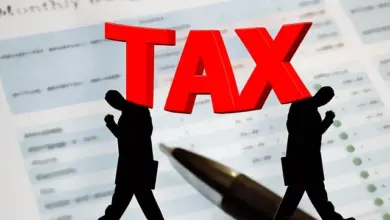Electricity, Gas, and Utility Costs in Italy: A Comprehensive Guide

Italy, with its rich history, stunning landscapes, and vibrant culture, is a country that continues to captivate visitors from around the globe. However, for those considering a move to Italy or simply planning an extended stay, understanding the cost of living—particularly electricity, gas, and utility expenses—is essential. These costs can vary significantly depending on the region, season, and household consumption habits. In this article, we’ll explore everything you need to know about utility costs in Italy, offering insights into how they compare globally and tips for managing your expenses effectively.
1. Overview of Utility Costs in Italy
Italy’s utility costs are generally considered moderate compared to other Western European countries. However, prices have been rising steadily due to global energy market fluctuations, inflation, and geopolitical factors such as the war in Ukraine. According to recent data, Italians spend an average of €1,500–€2,000 annually on utilities, including electricity, gas, water, waste disposal, and internet services. Let’s break down these costs further:
- Electricity : The average monthly electricity bill for a standard household (80–100 square meters) ranges between €70 and €120, depending on usage patterns and regional pricing.
- Natural Gas : For heating and cooking, natural gas bills typically range from €50 to €150 per month during colder months in northern regions like Lombardy and Veneto, where winters are harsher. Southern regions like Sicily and Calabria tend to have lower gas consumption due to milder climates.
- Water and Waste Disposal : Water bills usually amount to €20–€40 per month, while waste disposal fees add another €10–€30 monthly.
- Internet and TV Packages : High-speed internet plans start at around €25–€40 per month, with additional costs for premium TV packages.
2. Factors Influencing Utility Costs in Italy
Several key factors contribute to variations in utility costs across different parts of Italy:
a. Regional Climate Differences
Italy’s geography spans diverse climates, from the snowy Alps in the north to the sunny Mediterranean shores in the south. This diversity directly impacts energy consumption:
- Northern regions experience long, cold winters, leading to higher demand for heating systems powered by natural gas or electricity.
- Central and southern regions benefit from milder winters but face increased electricity use during hot summers for air conditioning.
b. Energy Market Regulations
Italy relies heavily on imported energy sources, making it vulnerable to international price changes. The Italian government has implemented measures to mitigate consumer burdens, such as subsidies for low-income households and tax breaks for renewable energy installations. However, these efforts often lag behind rapid market shifts.
c. Urban vs. Rural Living
Urban areas like Milan, Rome, and Turin tend to have slightly higher utility costs due to denser populations and greater infrastructure demands. Conversely, rural areas may see lower overall utility bills but could encounter challenges related to inconsistent service quality.
d. Seasonal Variations
Utility costs fluctuate throughout the year based on seasonal needs:
- Winter months drive up gas consumption for heating.
- Summer months increase electricity usage for cooling appliances.
3. Comparing Italy’s Utility Costs Globally
When comparing Italy’s utility costs to other countries, several trends emerge:
- Compared to neighboring France and Germany, Italy’s electricity prices are relatively high, primarily because of reliance on imported fossil fuels rather than nuclear power (as in France).
- Scandinavian countries like Norway and Sweden boast cheaper electricity thanks to abundant hydroelectric resources.
- In contrast, utility costs in Italy remain more affordable than in Switzerland or the United Kingdom, though still pricier than Eastern European nations like Poland or Hungary.
For expats moving from North America, Italy’s utility costs might come as a surprise. While U.S. residents enjoy some of the lowest electricity rates globally, Italians pay nearly double for the same service due to differences in taxation and energy policies.
4. Tips for Reducing Utility Expenses in Italy
Managing utility costs effectively requires a combination of smart consumption practices and strategic investments. Here are some practical tips:
a. Invest in Energy-Efficient Appliances
Switching to energy-efficient appliances labeled with the EU Energy Label (A+++ rating) can significantly reduce electricity consumption. Look for eco-friendly options when purchasing refrigerators, washing machines, dishwashers, and HVAC systems.
b. Optimize Heating and Cooling Systems
- Use programmable thermostats to regulate indoor temperatures efficiently.
- Insulate windows and doors to minimize heat loss during winter.
- Consider installing solar panels if feasible; Italy offers incentives for renewable energy adoption through programs like “Conto Termico.”
c. Monitor Water Usage
Simple actions like fixing leaky faucets, using low-flow showerheads, and collecting rainwater for gardening can help conserve water and cut down on bills.
d. Take Advantage of Discounts and Subsidies
- Many Italian utility providers offer discounted rates for customers who switch to electronic billing or opt for multi-service bundles.
- Low-income families can apply for social bonuses (“Bonus Sociale”) to receive reduced electricity and gas rates.
e. Compare Providers Regularly
Italy’s deregulated energy market allows consumers to choose their suppliers. Websites like SosTariffe and Facile.it enable users to compare offers and find the best deals tailored to their needs.
5. Future Trends in Italy’s Energy Sector
Looking ahead, Italy is committed to transitioning toward cleaner and more sustainable energy solutions. Key initiatives include:
- Expanding renewable energy capacity, particularly solar and wind power.
- By 2030, Italy aims to generate at least 55% of its electricity from renewable sources.
- Phasing out coal-fired power plants by 2025.
- Promoting electric vehicles (EVs) and investing in EV charging infrastructure.
These efforts not only align with Europe’s broader climate goals but also hold promise for stabilizing utility costs over the long term.



